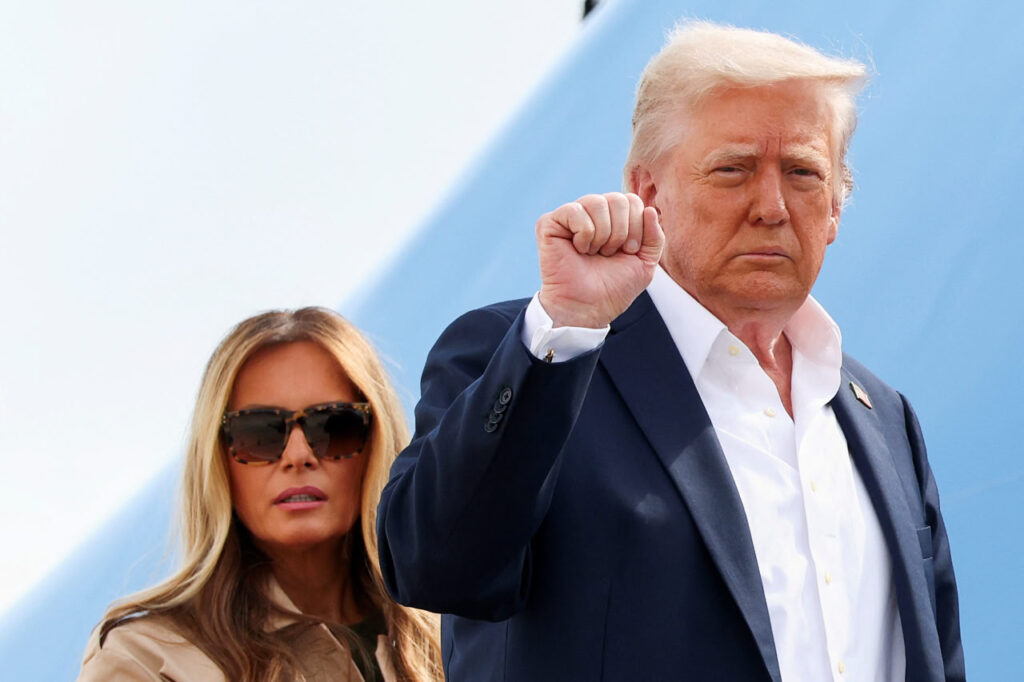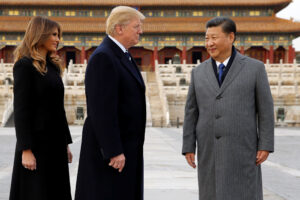Trump’s Ukraine Pivot: A Bold Move or a Risky Gamble?
In a stunning reversal, President Donald Trump has shifted gears on Ukraine, unveiling a $10 billion weapons deal, promising 17 Patriot air defense systems, and issuing a 50-day ultimatum to Russia. This marks a dramatic departure from the hands-off stance that defined the first six months of his second term. You get the sense that Trump, fed up with Vladimir Putin’s apparent duplicity, has decided to flex America’s muscle in a way few saw coming. But is this a masterstroke to force peace or a high-stakes gamble that could escalate an already volatile conflict? The answer hinges on whether Trump’s newfound resolve can outmaneuver Putin’s intransigence or if it risks plunging the U.S. deeper into a war it’s long tried to sidestep.
A Frustrated Peacemaker?
The catalyst for this policy earthquake seems to be Trump’s growing exasperation with Putin. For months, he’s touted his personal rapport with the Russian leader, dangling visions of ceasefires and joint ventures like sporting events or economic projects. Yet, each promising call has been followed by Russian missiles raining on Ukrainian cities, killing civilians and mocking Trump’s diplomatic overtures. You can almost hear the irritation in Trump’s voice during his Oval Office remarks: after one too many betrayals, he’s done playing nice. “I speak to him a lot about getting this thing done,” Trump said, “and then missiles are launched into Kyiv.” It’s the kind of frustration that comes from realizing you’ve been played—publicly, repeatedly.
This shift didn’t happen in a vacuum. Ukrainian President Volodymyr Zelenskyy has been sounding the alarm since February, warning Trump and Vice President J.D. Vance that Putin’s promises are hollow. Back then, during a heated White House exchange, Zelenskyy urged the administration to see through Russia’s bad-faith posturing. Trump’s base, skeptical of any U.S. involvement in Ukraine, pushed back hard against entanglement. But Putin’s relentless attacks seem to have tipped the scales, forcing Trump to confront a reality Zelenskyy has long understood: Russia isn’t negotiating; it’s stalling.
The Deal: A Win-Win or a Mirage?
The centerpiece of Trump’s plan is a $10 billion weapons package, framed not as aid but as a business deal. NATO allies, particularly in Europe and Canada, will foot the bill, while American factories churn out the arms. It’s a clever sidestep around domestic critics who bristle at “free handouts” to Ukraine. As U.S. Ambassador to NATO Matt Whitaker put it, “The days of the United States sending unlimited taxpayer dollars to defend Ukraine are over.” Instead, Trump is betting on a model that boosts the U.S. economy while arming Ukraine indirectly. It’s a win-win on paper: American jobs, Ukrainian defense, and European wallets.
But dig deeper, and the details get murky. The $10 billion figure sounds impressive, but it’s unclear how much will actually reach Ukraine’s frontlines. European nations might use these weapons to replenish their own depleted stocks rather than send them eastward. The timeline—six to nine months at best—means Ukraine won’t see immediate relief. And while Patriot air defense systems could bolster Ukraine’s ability to intercept Russian missiles, the term “17 systems” is frustratingly vague. A Patriot battery includes launchers, radar, and power generation; “systems” could mean anything from a single launcher to a full battalion. Without clarity, it’s hard to gauge the real impact.
What’s troubling is the risk of overpromising. Trump’s rhetoric—bold, brash, and deadline-driven—sets high expectations. If these systems don’t materialize quickly or if the $10 billion gets tied up in NATO’s bureaucratic maze, the U.S. risks looking impotent. Worse, Ukraine, battered by daily drone and missile barrages, can’t afford delays. Russia’s use of North Korean ammunition and makeshift logistics (think Scooby-Doo vans and donkeys) shows they’re scraping by, but their sheer volume of attacks—hundreds of drones daily—keeps Ukraine on its heels.
The 50-Day Ultimatum: Pressure or Posturing?
Then there’s the 50-day ultimatum, a classic Trump move: a hard deadline paired with a threat of 100% tariffs on countries buying Russian oil and gas, like China, India, and Brazil. It’s a bold play to choke Russia’s war machine by targeting its economic lifelines. Senator Lindsey Graham framed it as a wake-up call to these nations: stop bankrolling Putin, or face America’s economic wrath. The logic is sound—Russia’s economy depends on energy exports, and squeezing its buyers could force Putin to the table.
But here’s the rub: deadlines are Trump’s signature, and they rarely stick. Russian Foreign Minister Sergei Lavrov mocked this, pointing to Trump’s earlier boasts of ending the war in “24 hours” or “100 days.” Lavrov’s skepticism is warranted; Putin has shown no interest in good-faith talks, insisting on completing his “special military operation” first. Russian milbloggers like Fighter Bomber see the 50 days as a window to grab more Ukrainian territory, betting Trump’s bluff won’t materialize. Another blogger, Alexander Kots, even spun it as an ultimatum to Ukraine, suggesting Trump is pressuring Kyiv to concede if Russia gains ground.
This raises a chilling question: what if Putin calls Trump’s bluff? A July 3rd call, where Putin hinted at escalating to seize more Ukrainian regions, reportedly spurred Trump’s pivot. If Russia ramps up its offensive, will Trump follow through with tariffs? And if he does, will they hurt more than they help? Targeting China and India could disrupt global markets, alienate allies, and embolden Putin to double down. It’s a high-wire act, and Trump’s history of moving on from unmet deadlines doesn’t inspire confidence.
A Deeper Shift?
There’s a broader context here that can’t be ignored. Trump’s pivot comes amid whispers of a July 4th call where he urged Zelenskyy to strike Russian cities like Moscow and St. Petersburg if given the right weapons. It’s a jaw-dropping escalation from a president who once seemed content to let Ukraine fend for itself. Zelenskyy’s response—“Absolutely, we can if you give us the weapons”—suggests a readiness to match Russia’s aggression. But arming Ukraine for deep strikes risks pulling the U.S. into a direct confrontation with Moscow, something even Trump’s hawkish advisors might hesitate to endorse.
This shift also reflects a domestic tightrope. Trump’s base, long wary of Ukraine aid, is starting to soften, with some loyalists now praising the weapons deal as a savvy economic move. But the broader political landscape remains fraught. A bipartisan Senate sanctions bill, mentioned by Trump, has languished for months, and its passage seems unlikely. Meanwhile, Ukraine’s battlefield reality—slow Russian gains, civilian casualties, and a desperate need for air defenses—demands more than symbolic gestures.
The Road Ahead
What’s clear is that Trump’s Ukraine gambit is a high-stakes bet. If the weapons flow, Europe pays up, and Putin blinks, Trump could emerge as the dealmaker he claims to be. But if Russia digs in, the deadlines pass, and the arms don’t deliver, this could become another unfulfilled promise in a war that’s already stretched three years. Frankly, the stakes couldn’t be higher—not just for Ukraine, but for NATO’s credibility and America’s global standing.
The real question is whether Trump’s frustration with Putin will translate into sustained commitment or dissolve into another fleeting headline. Ukraine’s fight isn’t just about territory; it’s about whether the West can still muster the resolve to counter authoritarian aggression. For now, Trump’s taken a step toward leadership, but it’s a step into uncharted territory. Will he stay the course, or will this be another deal that never quite closes? Only time—and perhaps 50 days—will tell.



